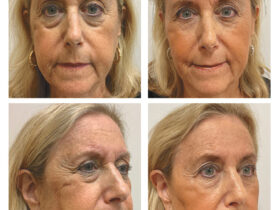Contributed by Avow –
 November is National Hospice Month – a time for us to thank the nurses, chaplains, social workers and other caregivers in southwest Florida who bring comfort and peace to our friends and family members at end of life. It’s also an opportunity to compare myths about hospice with reality to see how much we really know about this specialty care. Do any of the following myths – or realities – surprise you?
November is National Hospice Month – a time for us to thank the nurses, chaplains, social workers and other caregivers in southwest Florida who bring comfort and peace to our friends and family members at end of life. It’s also an opportunity to compare myths about hospice with reality to see how much we really know about this specialty care. Do any of the following myths – or realities – surprise you?
Myth: Hospice is a place.
Reality: Hospice is an approach to caring for people who are living with a terminal illness. It is not a building, like a hospital. When most people enter a hospice program, they receive care in the comfort of their own home – a house, apartment, mobile home, assisted living facility or other residence. Some hospices do have a facility where patients can stay temporarily until a situation regarding their care is resolved.
Myth: Hospice means that the patient will
soon die.
Reality: Hospice patients decide to focus on comfort and let their disease take its natural course. For some people, that means being in hospice only a few days. Others may be hospice patients for months.
Myth: Hospice is only for cancer patients.
Reality: Surprisingly, the majority of hospice patients do not have cancer: their illness is congestive heart failure, chronic lung disease, dementia or other condition.
Myth: Patients can only receive hospice care for a limited amount of time.
Reality: The Medicare Hospice benefit and most private insurance programs pay for hospice care as long as the patient is eligible. Eligibility is based on a physician’s determination that the patient’s life expectancy is six months or less.
Myth: Hospice provides 24-hour care.
Reality: Hospice care supplements – but does not replace – the care provided by families, friends, the staff at an adult living facility or other caregivers. Hospice nurses visit one or more times each week as the patient’s condition requires. Members of a hospice team are also available by phone or to make visits to patients’ homes around the clock to answer questions or help with an emergency. Families who want help with 24/7 personal care in their home for a patient may decide to hire private duty nurses or other assistants if insurance coverage or finances permit.
Myth: All hospice programs are the same.
Reality: All Medicare-licensed hospice programs must provide a core group of services, so by that measure, the programs are “the same.” Individual hospices or hospice organizations, however, may choose to add extra services not required by the Medicare Hospice benefit. Some programs are offered by independent companies; others are branch offices of larger hospices with multiple locations. Finally, some hospices are not-for-profit and others are for-profit.
Myth: Hospice is just for the patient.
Reality: Hospice focuses on comfort, dignity, and emotional support for both the patient and his or her family or caregivers. Hospice programs provide medical, spiritual and emotional care for patients; for families, they provide education, guidance, emotional support and a friendly listening ear.
Helping families cope with the loss of a loved one is an essential role of hospice programs: bereavement specialists follow up with patient family members a minimum of 13 months following the patient’s death. Many have specialized programs to help children and teens through the grieving process.
Myth: A physician decides whether a patient should receive hospice care and which agency should provide that care.
Reality: The role of the physician is to recommend care, whether hospice or traditional curative care. It is the patient’s right (or in some cases the right of the patient’s healthcare surrogate or power of attorney) and decision to determine when hospice is appropriate and which program suits his or her needs. Anyone may request a hospice consultation. Patients may even self refer. A physician must certify that a patient has been diagnosed with a terminal illness and has a life expectancy of six months or less.
Myth: Once a patient elects hospice care, he or she cannot return to traditional medical treatment.
Reality: Patients always have the right to ask for traditional care at any time, for any reason. If a patient’s condition improves, he or she can be discharged from hospice and return to aggressive, curative measures if desired. Patients are always welcome to consider hospice again, and will be readmitted when certified by a physician.
Myth: Hospice administers morphine to
hasten the dying process.
Reality: The hospice philosophy of care is built on a commitment of letting death happen in its own time. Hospice care does not support the administration of any drug to speed up death or prevent it from happening.
Wonder what else you’ve heard about hospice that might not be true? Avow is here to answer your questions about end of life care, grief and loss, palliative care, caregiving and more. We are a nonprofit health care company based in Naples, serving southwest Florida for 30 years through a variety of programs. Call us 24/7 at 239-261-4404 or visit www.avowcares.org.









